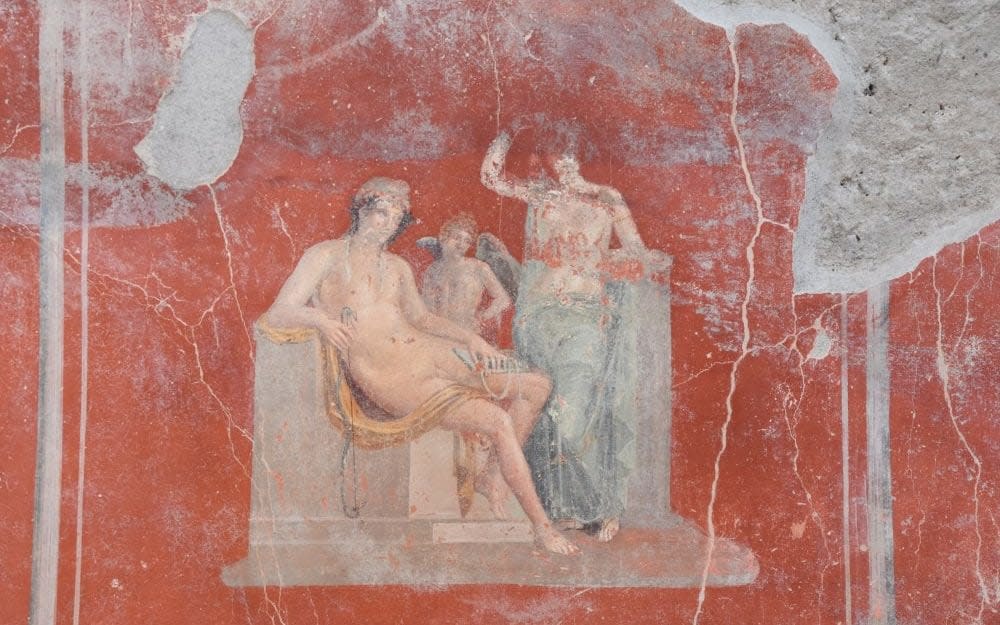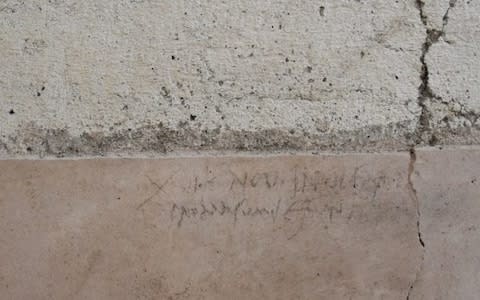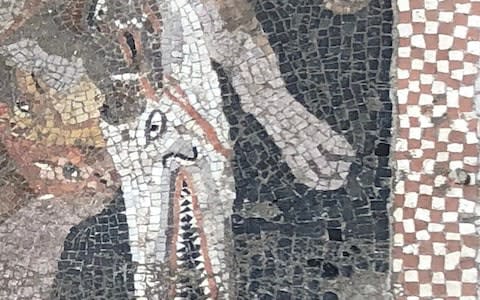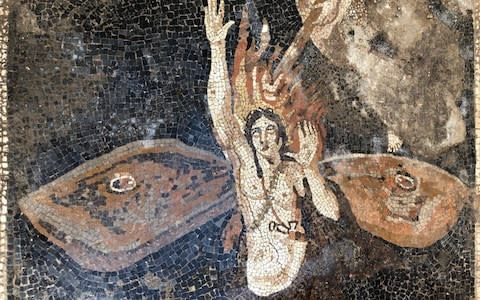Newly found inscription at Pompeii rewrites the history of the eruption of Mt Vesuvius

Archeologists in Pompeii have found an inscription written in charcoal that suggests the eruption of Mt Vesuvius, which buried the town, happened two months later than previously thought.
The charcoal writing, discovered on the wall of a villa during a new phase of excavations, adds weight to a theory that the volcano destroyed the town in October AD 79 rather than August of that year.
The Italian authorities said the new discovery “rewrites the history” of Pompeii, revising the widely-held belief that the eruption happened on August 24.
The inscription reads, in Latin, XVI K NOV - the 16th day before the first day of November in the Roman calendar, in other words October 17.
The inscription may have been written by a builder or architect who was working on the restoration of a villa a few days before the eruption, possibly as a way of recording the work he had done.
Remarkably, it survived the catastrophic eruption of Vesuvius, which buried much of the town in ash and pumice and which experts now believe occurred on October 24.

“It’s an extraordinary find and finally gives us a certain date for the eruption,” said Massimo Osanna, the director of Pompeii.
The inscription and date was found along with other bits of writing, much of it ribald. “On the walls of the atrium and corridor of the villa there is a notable quantity of graffiti, which is still being studied, with phrases that are in some cases of an obscene character," archeologists said in a statement.
Experts also uncovered mosaics depicting wild animals such as crocodiles, snakes, deer and lions, as well as frescoes of gods such as Venus, Adonis, Paris and Eros.

The decorations were uncovered in the remains of two villas, parts of which were excavated in the 19th century.
In one villa, archeologists found the skeletal remains of at least five people who had tried to find refuge in the inner rooms of the property but were killed by the effects of the eruption.
Alberto Bonisoli, the cultural heritage minister, who visited Pompeii to see the new discoveries, said: “The inscription helps us to more precisely date the famous eruption – it didn’t happen in August but in October.

“In a small way we are rewriting the history books, which until now have cited Pliny the Younger, who wrote of the eruption happening on August 24.”
Much of what is known about the destruction of Pompeii comes from Pliny, who witnessed the eruption and described it in letters to the historian Tacitus.
Some scholars cautioned, however, that the idea that the volcano erupted in October had been mooted before.

Archeologists have found at Pompeii the calcified remains of fresh pomegranates, suggesting that the cataclysm happened in autumn because pomegranate trees do not mature as early as August.
Pomegranate season typically lasts from October until January or February.
The discovery of a calcified branch with berries on back in the 19th century had also raised the idea that the eruption may have happened later than August.

 Yahoo News
Yahoo News 
